First, some housecleaning. Substack aggressively pursues subscriptions. It’s how they get income from content makers like me. You may have gotten a notice your subscription ended or just in general to upgrade your subscription. That’s not my doing and if I promised you a paid subscription for whatever reason and it ended, just let me know and I will extend it. I give a 25% discount to paid subscribers and free subscriptions to students, seniors and for anyone who pre-orders my new book. In partnership with Bookshop dot org, they are giving a 10% discount during the month of March for my new book Footnotes from the Most Fascinating Museums. I would say March Madness, but I see that’s already being used. Use the coupon code “MuseumBook” when you check out.
The following is a message I’m sharing from BookShop. org…
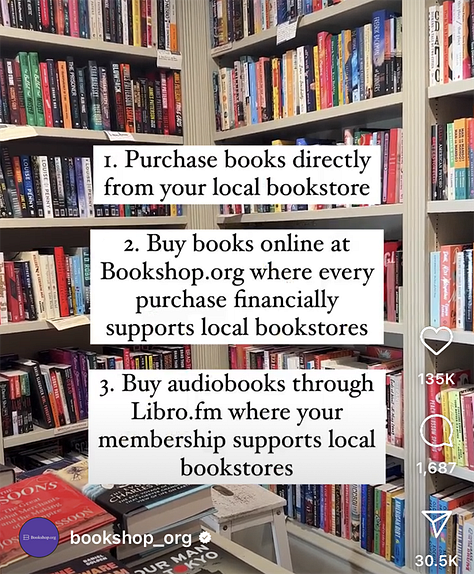





Thank you to everyone who already pre-ordered my new book and thanks to those reviewing the book and all your kind words. I’m hearing from so many who saw an advanced copy and enjoyed it.
I’ve mentioned before how important it is to a book to get reviews and I’m going to spend a minute explaining that, because it’s not what you think. Reviews trigger analytical actions online after reaching certain levels despite whether the reviews are negative or positive. After 5 reviews, things begin to take hold automatically. After 50, your book receives attention in other ways, and then at the 200 level and so forth and so on. While the reviews and overall rating may sway humans to purchase, the robots online decide when and how frequently your book shows up elsewhere on other pages. It only cares about numbers, and how many eyeballs are showing up on your page, even if those eyeballs are rolling to the sky. Unfortunately, the same is true for feeds on Facebook and Instagram, where, for instance, a trolls count the same as, being followed by Joyce Carol Oates. It’s less to do with the quality of followers, for the robots, than the quantity.
For a book, it’s near impossible for it to perform well nowadays without getting in line and feeding the robots the numbers it wants. Ernest Hemingway did not have to compete with nine million new releases a year (which includes the every growing self-published books and hybrid houses.).
One last story on this subject — and I will be talking about the nuts and bolts of publishing again on the Free Advice Fridays webinar with Keri-Rae Barnum of New Shelves Book on April 12th, 10am EST (click to join and even ask me any publishing questions you have). I have worked for nine different publishers from small to large, in the capacity of writer, illustrator, art director, cartoon editor and designer.
I do ask friends to leave reviews of my books, but only if they really want to, and to be honest. One of my best friends said he loved my bookstores book when it came out and would be happy to leave a review. I never look at reviews now because of stories like this would drive me crazy but back then I did check reviews and I noticed the average was brought down by one bad review. It’s amazing how much one two-star review can affect an otherwise stellar report card of four- and five-star reviews. The bad review was by my best friend and I of course to called him right away to confront him. Why did he say the book was not very good —did I do something to upset him? We were fighting? Did I owe him money for a meal? Although he claimed to love the book, he also proudly told me he wrote a harsh review that left no evidence that it was written by a friend. What an idiot.
I’m going to in each issue of The Bob, single out people who helped me in the making of the book. Erika Funke is this wonderful radio host for WVIA in Pennsylvania who contributed a wonderful story for the museum book about her frantic trip to the calming Rothko Chapel in Houston. I just saw Erika again the other day to appear on her TV show and discuss the cartoon pioneer Rose O’Neil with Heather Sincavage, Associate Professor/Director of the Sordoni Art Gallery in Wilkes Barre.

It was very flattering to be on TV. Keystone Arts airs on PBS in Pennsylvania and everything was fine until it came closer and closer to airtime. There was a stretch where we, the panelists, had to just sit still for about fifteen minutes. During this time there was an intro that played on these large screen monitors facing me with my stupid head speaking with the most annoying voice imaginable discussing art from another show that I never watched until that moment. Remember when there were answering machines and you hated to hear yourself (those were machines used in olden days to record messages on a device called a telephone.)? Well, imagine that quadrupled. As airtime came I did my best to remember the stories I had wanted to get out. My co-panelist had a well-prepared fascinating story about the first female cartoonist, Rose O’Neill. Here’s the link if you want to hear me and/or more about Rose O’Neill. I received many good reviews (despite my nervousness). LaughLine called me, “insightful…witty…and engaging.”
This is the new contest running at the CartoonStock dot com which is giving $1,000 in prize money. $5 entry (which does not go to me). The deadline is tonight, Monday March 4th. To enter go here and good luck.
I wrote the following article, published in Writer's Digest, with Dr. Mark A. Shatz. Mark is an award-winning professor of psychology at Ohio University-Zanesville and has extensive experience as a teacher, speaker, and seminar leader on various topics such as pedagogy, death education, and stress management. Part 2 will run in two weeks.
Together we are doing a more in-depth webinar on this subject at the upcoming Erma Bombeck Workshop on Friday April 5th. Join us here.
Turning the Page Into a Canvas: Part 1
Why do we universally appreciate slapstick, sight gags, and cartoons? Because they are visual—the humor unfolds right before our eyes.
As writers, we have a unique challenge—to craft worlds, including humorous ones, using only words. We, a cartoonist and psychologist, present techniques from our fields to help writers make humor writing more visual, effectively showing readers the funny.
As we discuss ways to strengthen print humor, we remain mindful of E. B. White’s observation, “Humor can be dissected, as a frog can, but the thing dies in the process …” Our succinct dissection focuses on ways to spark readers’ imaginations while ensuring the survival of humor and the frog.
Know Your Audience
The comedian Steven Wright pondered, “If you tell a joke in the forest but nobody laughs, was it a joke?” We say “no.” Humor that is not accessible to your audience is akin to that unheard joke in the forest. And that’s neither fun nor funny.
There are numerous theories about what makes people laugh, many of which revolve around psychological concepts like incongruity and superiority. The only common denominator is that funny is subjective and relative, so it’s essential to tailor humor to your specific audience.
Writing humor requires you to walk in your readers’ shoes, anticipating how they will perceive and construct the humor you are creating. Understanding the potential readership is critical to ensure your humor doesn’t fly over their heads. Or under.
The audience dictates every aspect of your humor writing, from word choices and phrasing to the gags themselves. For instance, writing a piece for The New Yorker requires a different brand of humor compared to MAD magazine. Constantly tuning into your readers’ perspective can help you sidestep the dreaded “It’s just not right for us” rejection.
A comedic awareness of the readership will point you in the right direction, whether you are crafting a one-liner, a blog post, or a more extended piece. The following principles can help make your writing more vibrant, entertaining, and appealing.
Show, Don’t Tell: The Metaphorical Paintbrush
At first glance, writers and cartoonists have vastly different toolboxes and skill sets. But if you look closely, you will notice similar devices, such as exaggeration, contrast, and simplification. Before we delve into these techniques, it’s essential to cultivate the right mindset for writing humor that readers can easily visualize.
Think of humor writing as painting by numbers. You, the writer, sketch an outline, and the reader uses their imagination to fill in the details and bring out the humor. Your challenge is to provide enough information to guide readers in conceptualizing and understanding the intended humor.
Vague references can be difficult to imagine and leave too much to readers’ guesswork. But descriptive language—complete with sensory details, actions, reactions, and consequences—makes it easier for readers to understand what you’re getting at while creating a humorous scene in their minds.
Here’s an example. Instead of writing, “Julie was nervous before her speech,” you could try something more descriptive: “As she approached the podium, Julie’s off-white blouse darkened with pit stains, as she stumbled on the steps, quickly grabbing the ruby-red stage curtains to prevent her fall from becoming an Instagram sensation.”
And don’t forget about wordplay, similes, and metaphors. They can help you craft memorable, expressive characters with amusing traits, quirks, and physicality. For example, you might describe a character’s irritating laugh as “worse than a honking goose scraping its beak across a blackboard,” a vivid, funny image for readers.
Specific references can help prompt visualization. For instance, a melting SNICKERS bar triggers a more precise image than a generic “candy bar.” But again, ensure your reader will understand any concrete examples, emphasizing the importance of knowing your audience. How many readers would know that a Charleston Chew or Chick-O-Stick are candy bars and not vulgar slang terms from Urban Dictionary?
Simplification: Less Is Funnier
In many literary forms, embellishment enriches a piece. That’s not true for humor writing – humor can get lost with too much detail. It’s like looking for that joke in a forest—if you can’t find it, there’s no funny.
Just as a cartoonist simplifies a drawing to avoid detracting from the humor, you too must simplify your writing. Adding a bit of shading will give depth to an illustration, yet there’s usually no need to detail every feature. A good cartoon, or print piece, lets the reader connect the dots and experience that light-bulb eureka moment.
Beginning writers tend to fluff up humor with needless details, overwhelming the humor and rendering scenes and characters unrecognizable. Overloading a humor piece with information is like smothering the funny with a pillow filled with words.
There’s a thin line between lame and funny, and the difference often lies in whether a writer adheres to the universal comedic principle, “less is funnier.” By simplifying complex situations, characters, plots, and reactions, your work becomes more digestible and humorous. That’s why the final step of humor writing, aggressive editing, is key to creating hilarious material.
End of Part 1. Part 2 in a couple of weeks.
Drumroll….this issue The Felix goes to P.C. Vey. Peter has seemingly produced a very consistent system to crank out humor in his own visual language — it always looks like he does his craft with great ease. His work of over 1,200 cartoons, can be seen on the CartoonStock.
Two books from two different genres of writing. Mandy Aftel has an amazing new book about her museum, The Museum of Scent: Exploring the Curious and Wondrous World of Fragrance. Her museum, Aftel Archive of Curious Scents, is the FIRST museum featured in my new museum book.
Raynia Carr’s new book moments: The Stories That Make a Life, is “…a celebration of life's ephemeral nature and a quest to find purpose in our brief time here.” She has a Masters Degree in Social Work and counsels on issues related to aging.
“A serene collection of some of North America’s most famous museums. Suitable for all ages and great for finding new places to visit.” — Library Journal
If you buy a copy of my book, as a Thank You I will give to you a 1-year subscription to the PAID version of this newsletter. Just email me using the button below that you bought the book — honor system.
And with that, this ends another issue of The Bob. I do appreciate anyone sharing the newsletter and helping me get the word out. And thank you for all the very nice feedback I’ve gotten from the newsletter so far, it’s greatly appreciated. Next issue is a paid edition and it includes my picks for the Best New Yorker Cartoons.




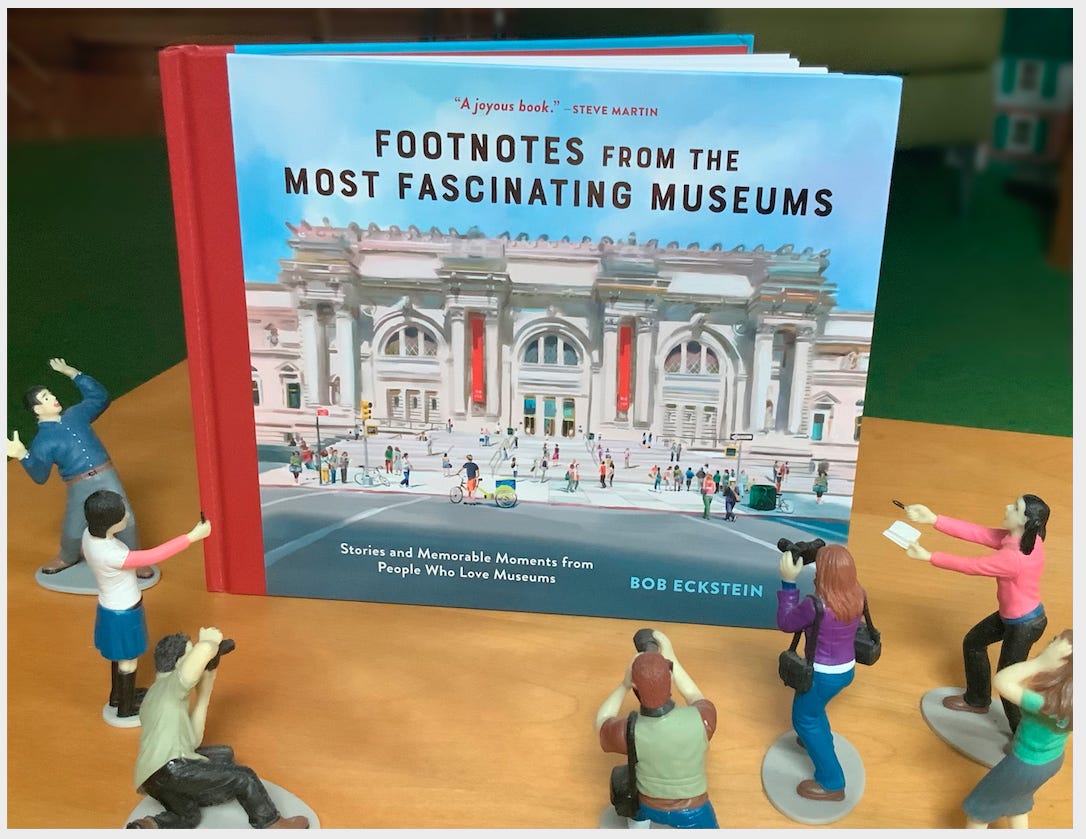










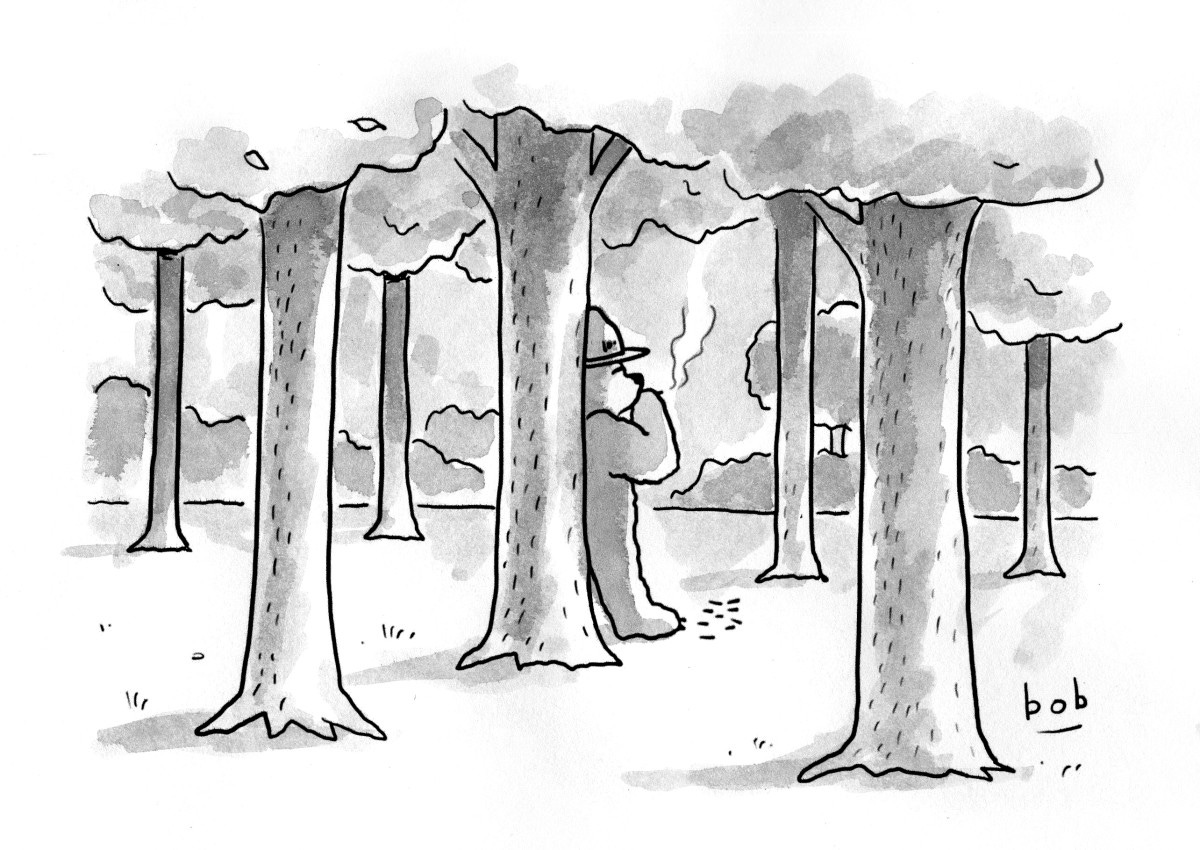
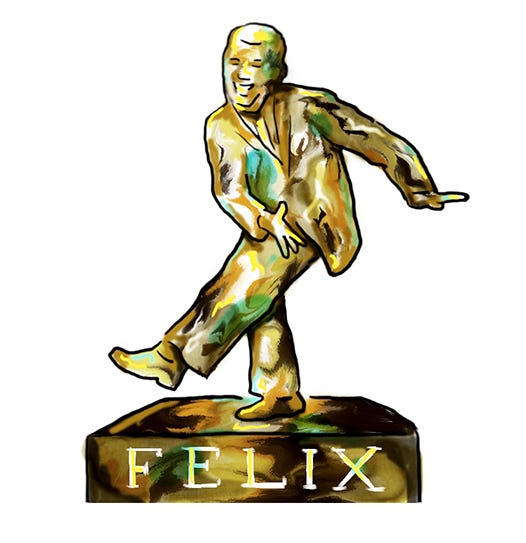








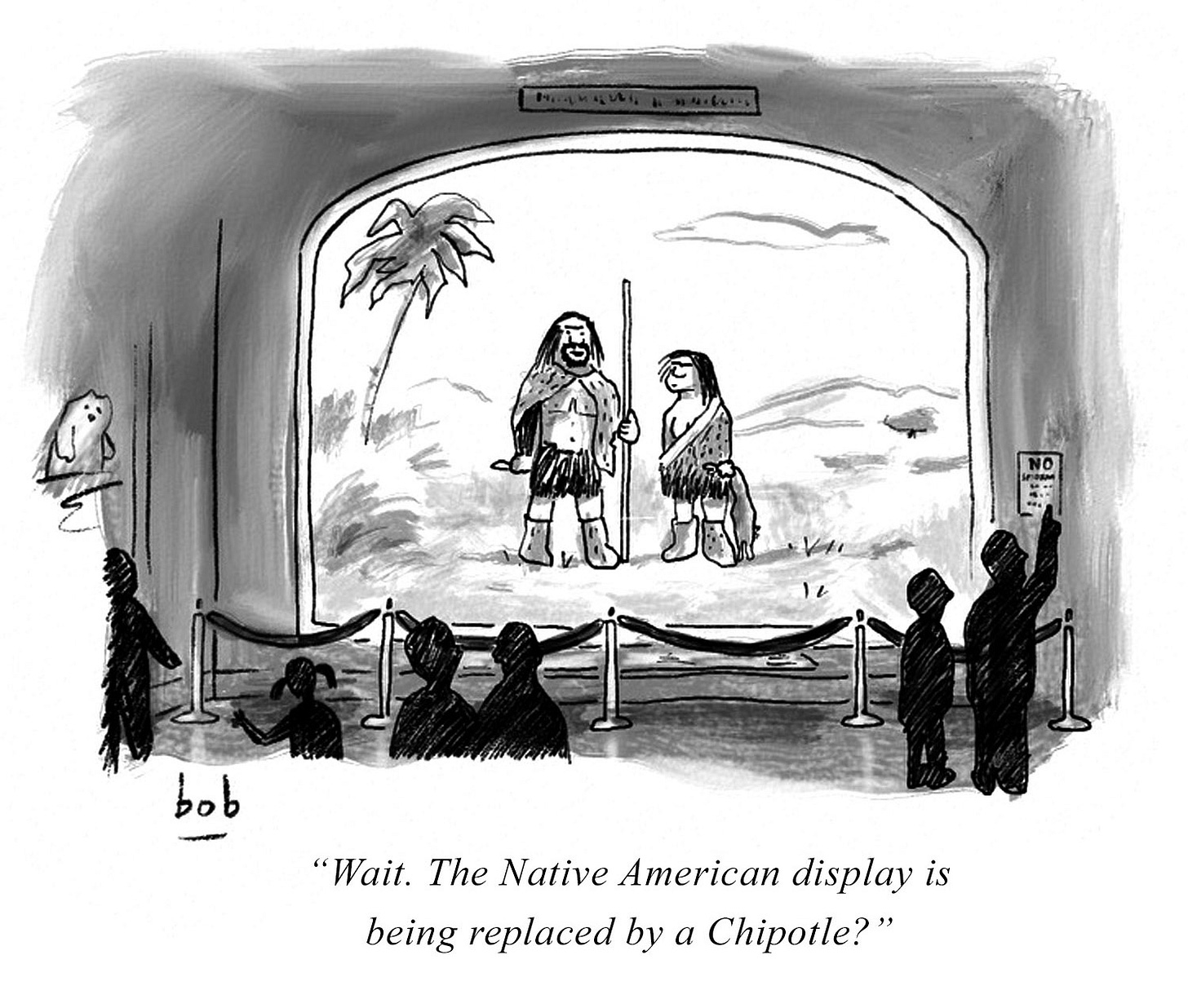


“Aggressive editing.” That is a great description and great advice.
Thank you so very much for including my book The Museum ofScent here and I cannot wait for your new book (which i have pre-ordered) to see my museum and all the others!!! 🧡💜 Mandy